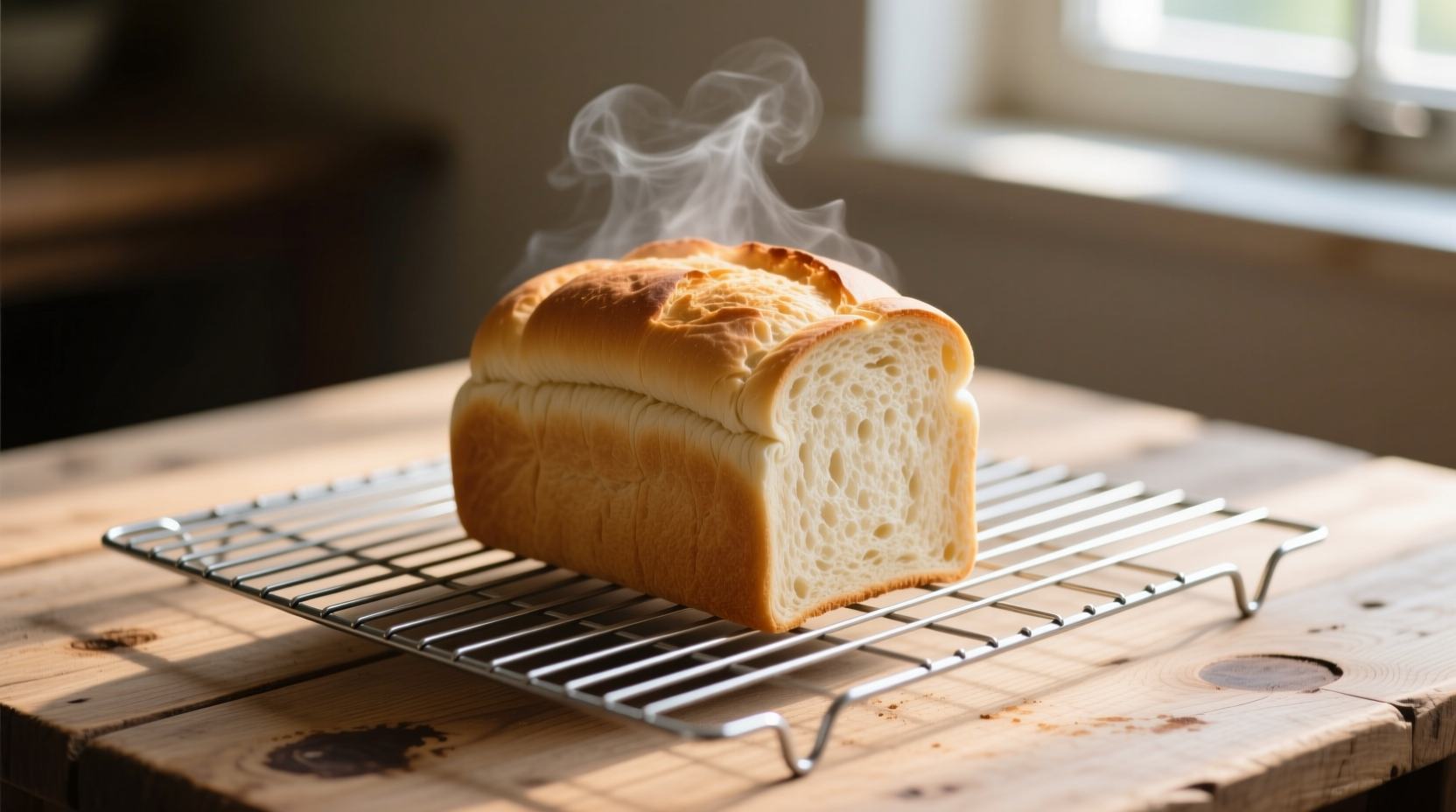The Essential Guide to Perfect Homemade White Bread
Nothing compares to the aroma of freshly baked white bread filling your kitchen. This comprehensive guide delivers exactly what you need to create bakery-quality results at home—no special equipment required. Whether you're a beginner or looking to refine your technique, these science-backed methods ensure consistent success with every loaf.
Why This White Bread Recipe Works
Unlike many online recipes that promise perfection but deliver disappointing results, this method incorporates professional baking principles adapted for home kitchens. The precise hydration ratio (65%) creates optimal gluten development while preventing dense texture. By controlling fermentation temperature and time, you'll activate yeast perfectly without overproofing—a common pitfall that causes collapsed loaves.
Ingredients You'll Need
Quality ingredients make the difference between good and great bread. Here's exactly what to use:
| Ingredient | Measurement | Why It Matters |
|---|---|---|
| All-purpose flour | 3½ cups (440g) | Provides balanced protein content for structure without toughness |
| Active dry yeast | 2¼ tsp (7g) | Standard packet size ensures reliable rise without bitterness |
| Warm water | 1¼ cups (295ml) | 105-110°F activates yeast without killing it |
| Salt | 1½ tsp (9g) | Controls fermentation and enhances flavor development |
Step-by-Step Baking Process
Mixing and Kneading (15 minutes)
Dissolve yeast in warm water with 1 tsp sugar. Wait 5-7 minutes until foamy—this confirms yeast viability. Combine flour and salt in large bowl, then add yeast mixture. Stir until shaggy dough forms. Turn onto lightly floured surface and knead 8-10 minutes until smooth and elastic. Properly developed dough passes the "windowpane test"—stretch a small piece thin enough to see light through without tearing.
First Rise (60-90 minutes)
Place dough in oiled bowl, cover with damp cloth. Let rise at room temperature (70-75°F) until doubled in size. Cooler temperatures extend rise time but develop better flavor. According to USDA food safety guidelines, dough should never remain in the "danger zone" (40-140°F) for more than 2 hours during fermentation.
Shaping and Second Rise (45-60 minutes)
Punch down risen dough to release gas. Shape into loaf by rolling tightly and pinching seams. Place in greased 9x5 inch pan. Cover and let rise until dough crowns 1 inch above pan rim. This critical step ensures proper oven spring—underproofed dough won't expand sufficiently during baking.
Baking (30-35 minutes)
Preheat oven to 375°F. Bake until golden brown and internal temperature reaches 190°F. Tap the bottom—it should sound hollow. Immediately remove from pan to cool on wire rack. Resist cutting for at least 1 hour; this allows starch retrogradation which sets the crumb structure.

Troubleshooting Common Issues
Dense texture? Likely causes: overflouring during kneading, underproofing, or killing yeast with water that's too hot. Measure flour by weight for accuracy.
Pale crust? Brush loaf with milk wash before baking for golden color. Avoid opening oven during first 20 minutes of baking.
Tunneling (large holes)? Overkneading or uneven shaping creates irregular gas pockets. Handle dough gently during shaping.
Storage and Serving Tips
Store cooled bread in paper bag at room temperature for 2-3 days. Never refrigerate—this accelerates staling. For longer storage, freeze sliced portions in airtight container. Revive stale bread by sprinkling with water and reheating at 350°F for 5-10 minutes.
White bread's history reveals fascinating cultural shifts. According to the National Bread Museum archives, refined white flour became status symbol in 19th century America after roller mills replaced stone grinding. The 1928 invention of pre-sliced bread by Otto Rohwedder revolutionized home baking, though artisan methods have seen resurgence since the 2000s as consumers rediscover traditional fermentation benefits.
Frequently Asked Questions
Can I make this recipe with bread flour? Yes, but reduce water by 2 tablespoons. Bread flour's higher protein content creates chewier texture ideal for sandwich loaves.
Why does my bread collapse after baking? Overproofing is the most common cause. The second rise should stop when dough reaches 1 inch above pan rim—any higher risks structural failure.
How do I test if bread is fully baked? Use an instant-read thermometer: 190°F internal temperature indicates proper doneness. Visual cues include deep golden crust and hollow sound when bottom is tapped.











 浙公网安备
33010002000092号
浙公网安备
33010002000092号 浙B2-20120091-4
浙B2-20120091-4